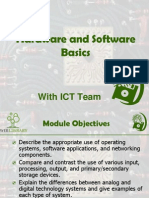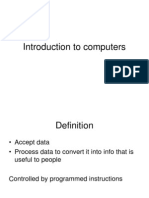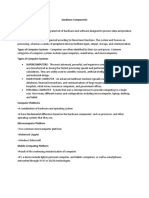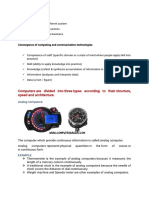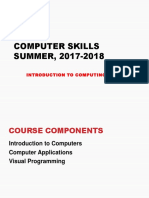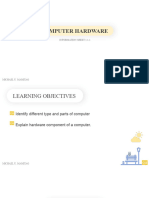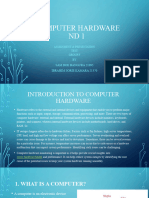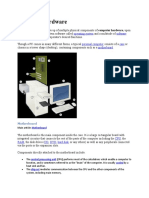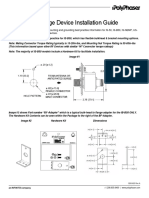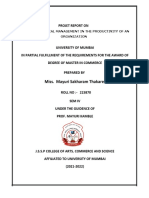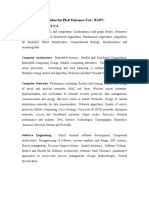0% found this document useful (0 votes)
33 views17 pagesIntroduction To Computer Hardware
The document outlines the course details for Computer Hardware at Koforidua Technical University, including the lecturer, venue, and schedule. It provides an extensive overview of microcomputers, their classifications, internal and external hardware components, computer specifications, and types of storage devices. Additionally, it discusses hybrid computers and the role of software in relation to hardware components.
Uploaded by
teyesamuel0956Copyright
© © All Rights Reserved
We take content rights seriously. If you suspect this is your content, claim it here.
Available Formats
Download as PPTX, PDF, TXT or read online on Scribd
0% found this document useful (0 votes)
33 views17 pagesIntroduction To Computer Hardware
The document outlines the course details for Computer Hardware at Koforidua Technical University, including the lecturer, venue, and schedule. It provides an extensive overview of microcomputers, their classifications, internal and external hardware components, computer specifications, and types of storage devices. Additionally, it discusses hybrid computers and the role of software in relation to hardware components.
Uploaded by
teyesamuel0956Copyright
© © All Rights Reserved
We take content rights seriously. If you suspect this is your content, claim it here.
Available Formats
Download as PPTX, PDF, TXT or read online on Scribd
/ 17















